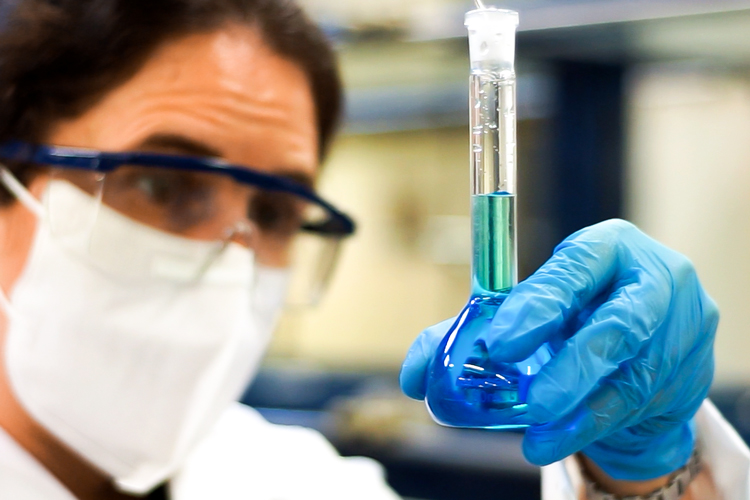For the third consecutive year, in view of how highly regarded the first two editions were, IQS held an activity aimed at high school students so they could practice some of the experimental work that might come up during the chemistry university access exam.

For the third consecutive year, in view of how highly regarded the first two editions were, IQS held an activity aimed at high school students so they could practice some of the experimental work that might come up during the chemistry university access exam.
As set out in the guidance document for the chemistry university access exam, the coordinating group for the chemistry subject establishes 12 experimental work questions that could be asked in the chemistry exam, either under the "Description of experimental procedures" or "Interpretation and analysis of experimental work" question types. Of these 12 experimental work questions, IQS chose three, specifically: 2.1. Experimental determination of the heat of a reaction; 2.2. Experimental observation of the direction of displacement of an equilibrium when the concentration, the pressure, or the temperature are varied; and 2.7. Experimental observation of the solubility equilibria of low solubility ionic compounds.
The specific context of this year, due to the restrictions related to COVID-19, made us consider the option of offering this workshop in an online format, and we aimed to get participating students to play an active role and experience the workshop in the most experimental way possible. With this in mind, six online sessions of the activity were held during the first three weeks of March under the leadership of Dr M. Victoria Codera, an IQS professor with the Department of Analytical and Applied Chemistry. The participants were provided with informational documentation before the sessions. At the beginning of each session, an explanatory lecture was given to help the students understand the dynamics of working in a laboratory. Dr Codera then conducted the experiment, combining images previously recorded in the laboratories and shared during the session, along with explanations and questions that she asked the attendees. As the session progressed, the students had to prepare a report of conclusions that helped them better understand the work that was done which could later be used for further study.
A total of 970 high school students from public and subsidized high schools throughout Catalonia signed up for this year's online edition of the event.
High school students from the following schools in Barcelona attended the event: Abat Oliba, Betània-Patmos, Claret, IES Emperador Carles, IES Infanta Isabel d’Aragó, IES La Vall del Tenes, IES Manuel Carrasco i Formiguera, IES Menéndez Pelayo, IES Montserrat, IES Montserrat Roig, IES Viladomat, IPSI, Jesuïtes El Clot, Jesuïtes Sarrià, Jesús i Maria, Jesús Maria, La Salle Bonanoba, La Salle Congrés, L’estonnac-l’ensenyança, Mare de Déu dels Àngels, Maristes Sants-Les Corts, Oak House School, Pàlcam, Pare Manyanet Les Corts, Pare Manyanet Sant Andreu, Pérez Iborra, Pia Balmes, Proa, Sagrado Corazón, Sagrat Cor de Sarrià, Salessians Horta, Sant Gervasi, Sant Marc Sarrià, Stucom, and Súnion. Students from the following high schools elsewhere attended the event as well: Hamelín-Laie (Alella), Sant Ermengol (Andorra la Vella), Andorrana de Batxillerat (Andorra la Vella), IES Can Planas (Barberà del Vallès), IES S’Agulla (Blanes), IES Camí de Mar (Calafell), IES Mediterrànea (Castelldefels), IES Forat del Vent (Cerdanyola del Vallès), IES Constantí, IES Ribera Baixa (El Prat del Llobregat), Sagrat Cor (El Vendrell), IES Ramon Muntaner (Figueres), Escola Pia (Igualada), SEK Catalunya (La Garriga), Tecla Sala (L’Hospitalet de Llobregat), IES Can Vilumara (L’Hospitalet de Llobregat), IES Ramon Muntaner (L’Hospitalet de Llobregat), Jesuïtes Bellvitge (L’Hospitalet de Llobregat), IES Caparella (Lleida), IES Lliçà d’Amunt, La Salle (Manlleu), Joviat (Manresa), IES Joan Oró (Martorell), GEM (Mataró), Escola Pia Santa Anna (Mataró), IES La Serra (Mollerussa), IES Vicenç Plantada (Mollet del Vallès), IES Vinyes Velles (Montornés del Vallès), Daina Isard (Olesa de Montserrat), Betlem (Premià de Dalt), IES Gabriel Ferrater i Soler (Reus), IES Roseta Mauri (Reus), Puigcerver (Reus) IES Lluís Companys (Ripollet), IES Estatut (Rubí), Escola Pia Sabadell, IES La Serra (Sabadell), Jaume Viladoms (Sabadell), IES Vallvera (Salt), Creanova (Sant Cugat del Vallès), El Pinar de Nuestra Señora (Sant Cugat del Vallès) European International School (Sant Cugat del Vallès), La Farga (Sant Cugat del Vallès) IES Sant Feliu de Guíxols, IES Anto Busquets i Punset (Sant Hilari Sacalm), La Miranda (Sant Just Desvern), IES Vilamajor (Sant Pere de Vilamajor), Sant Josep (Sant Sadurní d’Anoia), IES Torrent de les Bruixes (Santa Coloma de Gramanet), IES Els Pallaresos (Tarragona), IES Martí Franquès (Tarragona), Institució Tarragona (Tarragona), L’estonnac-L’ensenyança (Tarragona), IES Lluís Companys (Tordera), IES Vilafant, and IES Lluchi i Rafecas (Vilanova i la Geltrú).










